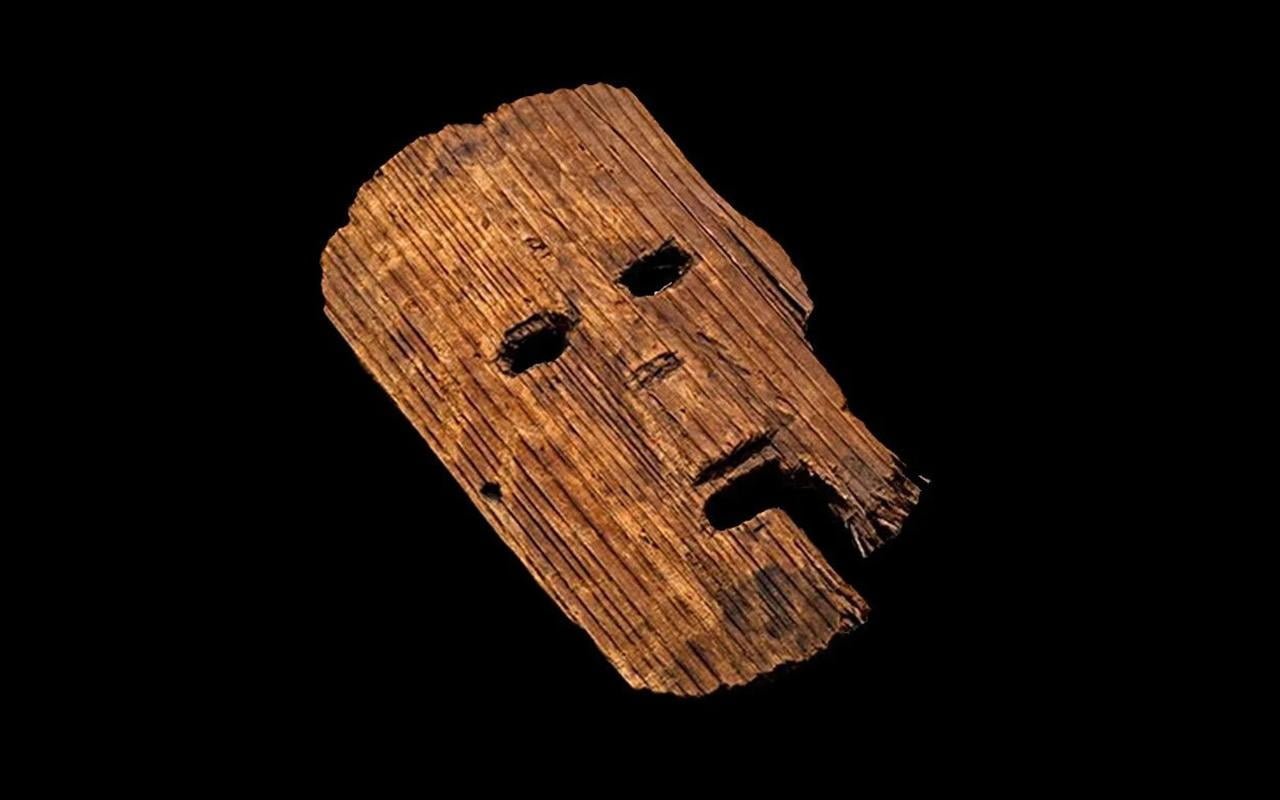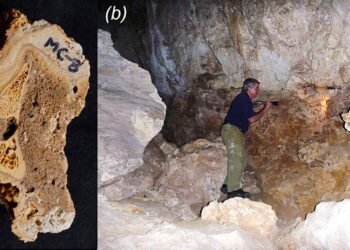A ritual mask that dates back 1800 years has been found by archaeologists in the Osaka Prefecture, Japan.

The discovery occurred while excavating the Nishi-Iwata ruins in Higashi-Osaka, where the mask was discovered in flood sediment situated 2.9 meters below the surface.
Constructed from cedar, the mask is human-like with two holes for eyes and one for the mouth, measuring 30 cm in length and 18 cm in width.
According to the Osaka Center for Cultural Heritage, the mask may have had string attached to a perforation on the side to tie it in place.
This wooden mask is from the Yayoi period, dating back to approximately 300 BCE, and is the third of its kind to be discovered in Japan.
This era marked a significant time of change in Japan, as the country transitioned to a settled agricultural society by adopting agricultural techniques from Korea, which were initially introduced in the Kyushu region.
During the Yayoi period, new styles of pottery emerged, and carpentry and architecture techniques improved. Additionally, there was a shift to more intensive rice agriculture in paddy fields, which were characteristic features of this period.
According to Kaoru Terasawa, the director of the Research Center for Makimukugaku in Nara Prefecture, the 1800-year-old mask was probably displayed at festivals because it is too heavy to wear.
Terasawa believes that the mask represents the “spirit of a head,” which was considered to be a god in human form and a symbol of the authority of the Okimi. he suggests that the powerful people who were influenced by the Yamato Kingship ceremonies likely used the mask at festivals.
Okimi was the title given to the leader of the Yamato Kingship, a political alliance of influential families based in Nara Prefecture, which existed from the third to the seventh century.
Aside from the mask, excavations at the Nishi-Iwata ruins in Higashi-Osaka also uncovered a wooden water bucket and a charred wooden object shaped like a hoe.
The mask will be exhibited at the Museum of Yayoi Culture in the Izumi area of Osaka Prefecture from April 29 to May 7.























